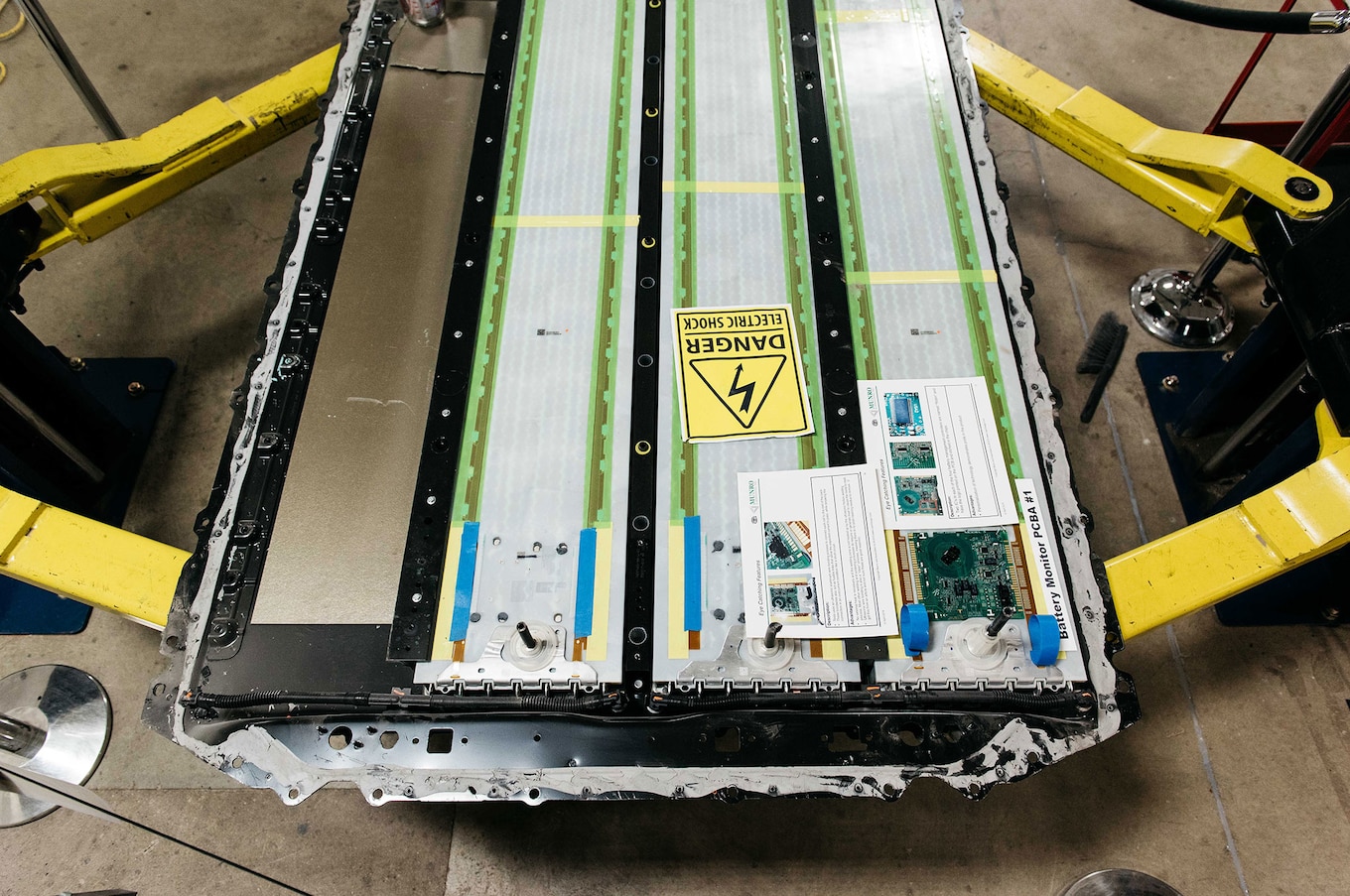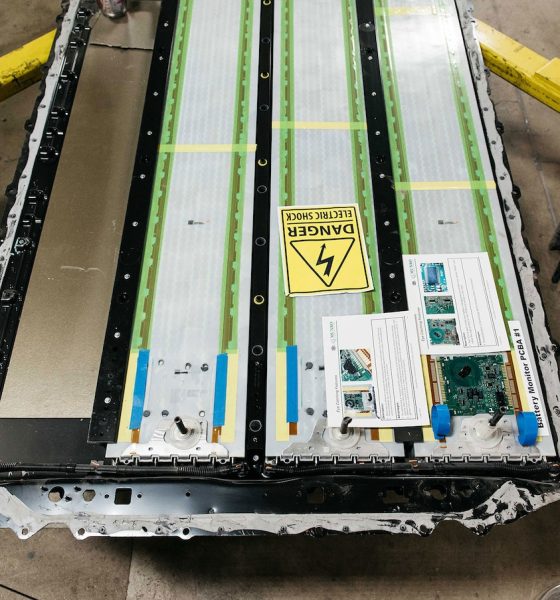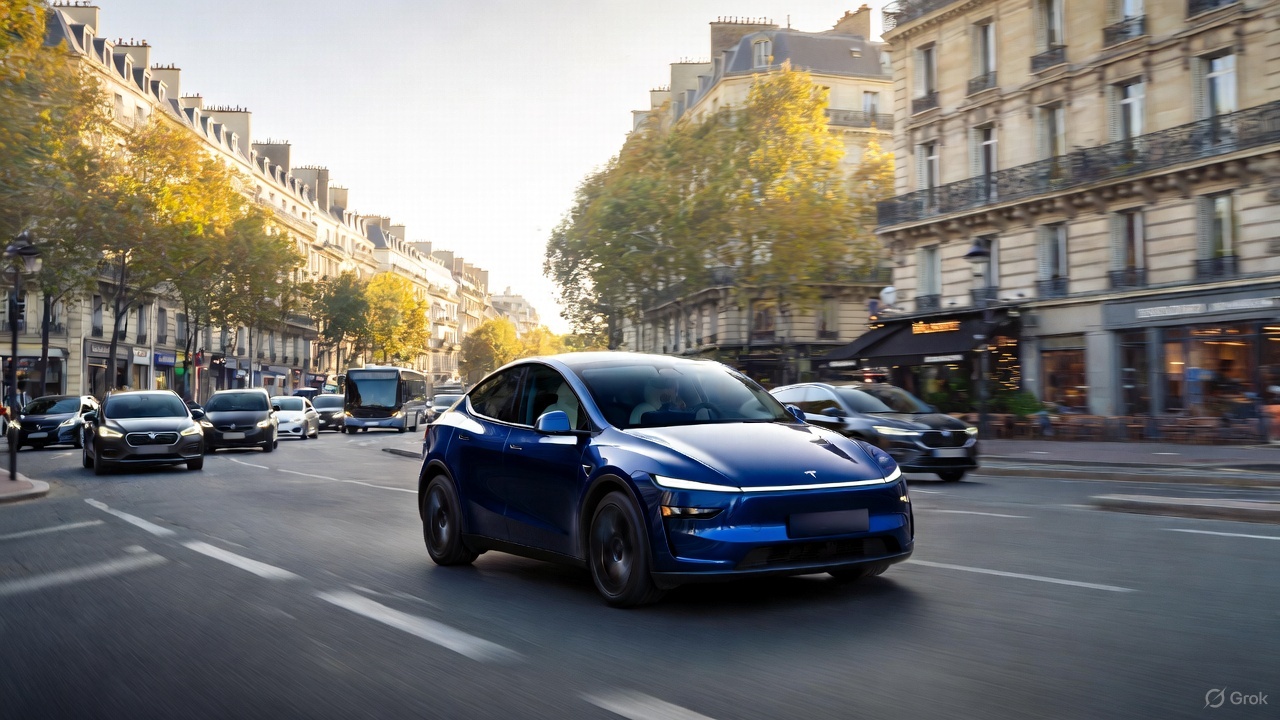

News
Elon Musk posts Tesla Battery Day update, hints at mid-May event
Those who have been waiting for Tesla’s 2020 Battery Day will now have to wait a little longer. Tesla CEO Elon Musk announced that the event would “most likely” take place in mid-May, roughly one month after its originally intended date. “Hard to predict dates right now. Most likely postponed to mid May,” Musk wrote on Twitter as a response to a Tesla community member asking about the event.
The reason for the delay in the event seems to be related to the COVID-19 pandemic. This virus has halted production lines in Fremont and Buffalo and has caused the company to adapt to new delivery processes to deliver new electric cars to their customers. Considering that Tesla events usually involve presentations to groups of people, Battery Day may involve viewers being packed in a large room. Such does not conform to current social distancing suggestions to prevent the spread of the virus.
Tesla’s Battery Day will outline the company’s plans for battery development for future vehicles and energy solutions. Musk stated the event would be geared toward a review of Tesla’s cell chemistry, module and pack, architecture, and the company’s manufacturing plan that will detail how it can reach a terawatt-hour per year of battery production. “We have a very compelling strategy. I mean, we are super deep in cell. Super deep. Cell through battery,” Musk said.
Hard to predict dates right now. Most likely postponed to mid May.
— Elon Musk (@elonmusk) April 9, 2020
Tesla’s ultimate goal with its cars is to reach price parity with its gas counterparts as soon as possible. Battery improvements would decrease the cost of vehicles tremendously, as the production of battery packs is one of the most expensive stages in EV manufacturing. Expectations suggest that Tesla has gotten its battery costs down to $100 per kWh, and Battery Day was widely speculated to be an event that discusses such a milestone.
Tesla has crafted a relationship with many cell manufacturers across the world, like Panasonic, which supplies the company’s lithium-ion vehicle batteries. In China, LG Chem and CATL are responsible for the task. The company has also made several acquisitions of battery research companies whose technologies can improve the quality of cells in the long term. One of these companies is Maxwell Technologies, whose research with ultracapacitors and dry electrode technologies could very well improve Tesla’s batteries in terms of quality and longevity.
This could lead to the development a “1-million mile battery,” which Tesla has predicted for its vehicles in the future. Researcher Jeff Dahn, a world-renowned battery specialist whose team at Dalhousie University, says that a battery capable of 1-million miles is more than feasible. This battery goal is attainable, especially considering the Dahn team’s development of pouch cells that have extended life.
Tesla held a similar event in 2019, called “Tesla Autonomy Day,” that outlined the company’s plans to complete its Full Self-Driving suite. However, it seems Tesla’s plans for 2020 are primarily focused on battery and energy storage, starting with Battery Day.
Fremont and Giga New York are poised to reopen on May 4, ending an over one-month shutdown. It is safe to assume that if this date is pushed back into late May or even early June, Battery Day could once again be delayed to ensure the safety of its attendees.

News
Man credits Grok AI with saving his life after ER missed near-ruptured appendix
The AI flagged some of the man’s symptoms and urged him to return to the ER immediately and demand a CT scan.

A 49-year-old man has stated that xAI’s Grok ended up saving his life when the large language model identified a near-ruptured appendix that his first ER visit dismissed as acid reflux.
After being sent home from the ER, the man asked Grok to analyze his symptoms. The AI flagged some of the man’s symptoms and urged him to return immediately and demand a CT scan. The scan confirmed that something far worse than acid reflux was indeed going on.
Grok spotted what a doctor missed
In a post on Reddit, u/Tykjen noted that for 24 hours straight, he had a constant “razor-blade-level” abdominal pain that forced him into a fetal position. He had no fever or visible signs. He went to the ER, where a doctor pressed his soft belly, prescribed acid blockers, and sent him home.
The acid blockers didn’t work, and the man’s pain remained intense. He then decided to open a year-long chat he had with Grok and listed every detail that he was experiencing. The AI responded quickly. “Grok immediately flagged perforated ulcer or atypical appendicitis, told me the exact red-flag pattern I was describing, and basically said “go back right now and ask for a CT,” the man wrote in his post.
He copied Grok’s reasoning, returned to the ER, and insisted on the scan. The CT scan ultimately showed an inflamed appendix on the verge of rupture. Six hours later, the appendix was out. The man said the pain has completely vanished, and he woke up laughing under anesthesia. He was discharged the next day.
How a late-night conversation with Grok got me to demand the CT scan that saved my life from a ruptured appendix (December 2025)
byu/Tykjen ingrok
AI doctors could very well be welcomed
In the replies to his Reddit post, u/Tykjen further explained that he specifically avoided telling doctors that Grok, an AI, suggested he get a CT scan. “I did not tell them on the second visit that Grok recommended the CT scan. I had to lie. I told them my sister who’s a nurse told me to ask for the scan,” the man wrote.
One commenter noted that the use of AI in medicine will likely be welcomed, stating that “If AI could take doctors’ jobs one day, I will be happy. Doctors just don’t care anymore. It’s all a paycheck.” The Redditor replied with, “Sadly yes. That is what it felt like after the first visit. And the following night could have been my last.”
Elon Musk has been very optimistic about the potential of robots like Tesla Optimus in the medical field. Provided that they are able to achieve human-level articulation in their hands, and Tesla is able to bring down their cost through mass manufacturing, the era of AI-powered medical care could very well be closer than expected.
News
Tesla expands Model 3 lineup in Europe with most affordable variant yet
The Model 3 Standard still delivers more than 300 miles of range, potentially making it an attractive option for budget-conscious buyers.

Tesla has introduced a lower-priced Model 3 variant in Europe, expanding the lineup just two months after the vehicle’s U.S. debut. The Model 3 Standard still delivers more than 300 miles (480 km) of range, potentially making it an attractive option for budget-conscious buyers.
Tesla’s pricing strategy
The Model 3 Standard arrives as Tesla contends with declining registrations in several countries across Europe, where sales have not fully offset shifting consumer preferences. Many buyers have turned to options such as Volkswagen’s ID.3 and BYD’s Atto 3, both of which have benefited from aggressive pricing.
By removing select premium finishes and features, Tesla positioned the new Model 3 Standard as an “ultra-low cost of ownership” option of its all-electric sedan. Pricing comes in at €37,970 in Germany, NOK 330,056 in Norway, and SEK 449,990 in Sweden, depending on market. This places the Model 3 Standard well below the “premium” Model 3 trim, which starts at €45,970 in Germany.
Deliveries for the Standard model are expected to begin in the first quarter of 2026, giving Tesla an entry-level foothold in a segment that’s increasingly defined by sub-€40,000 offerings.
Tesla’s affordable vehicle push
The low-cost Model 3 follows October’s launch of a similarly positioned Model Y variant, signaling a broader shift in Tesla’s product strategy. While CEO Elon Musk has moved the company toward AI-driven initiatives such as robotaxis and humanoid robots, lower-priced vehicles remain necessary to support the company’s revenue in the near term.
Reports have indicated that Tesla previously abandoned plans for an all-new $25,000 EV, with the company opting to create cheaper versions of existing platforms instead. Analysts have flagged possible cannibalization of higher-margin models, but the move aims to counter an influx of aggressively priced entrants from China and Europe, many of which sell below $30,000. With the new Model 3 Standard, Tesla is reinforcing its volume strategy in Europe’s increasingly competitive EV landscape.
News
Tesla FSD (Supervised) stuns Germany’s biggest car magazine
FSD Supervised recognized construction zones, braked early for pedestrians, and yielded politely on narrow streets.

Tesla’s upcoming FSD Supervised system, set for a European debut pending regulatory approval, is showing notably refined behavior in real-world testing, including construction zones, pedestrian detection, and lane changes, as per a recent demonstration ride in Berlin.
While the system still required driver oversight, its smooth braking, steering, and decision-making illustrated how far Tesla’s driver-assistance technology has advanced ahead of a potential 2026 rollout.
FSD’s maturity in dense city driving
During the Berlin test ride with Auto Bild, Germany’s largest automotive publication, a Tesla Model 3 running FSD handled complex traffic with minimal intervention, autonomously managing braking, acceleration, steering, and overtaking up to 140 km/h. It recognized construction zones, braked early for pedestrians, and yielded politely on narrow streets.
Only one manual override was required when the system misread a converted one-way route, an example, Tesla stated, of the continuous learning baked into its vision-based architecture.
Robin Hornig of Auto Bild summed up his experience with FSD Supervised with a glowing review of the system. As per the reporter, FSD Supervised already exceeds humans with its all-around vision. “Tesla FSD Supervised sees more than I do. It doesn’t get distracted and never gets tired. I like to think I’m a good driver, but I can’t match this system’s all-around vision. It’s at its best when both work together: my experience and the Tesla’s constant attention,” the journalist wrote.
Tesla FSD in Europe
FSD Supervised is still a driver-assistance system rather than autonomous driving. Still, Auto Bild noted that Tesla’s 360-degree camera suite, constant monitoring, and high computing power mark a sizable leap from earlier iterations. Already active in the U.S., China, and several other regions, the system is currently navigating Europe’s approval pipeline. Tesla has applied for an exemption in the Netherlands, aiming to launch the feature through a free software update as early as February 2026.
What Tesla demonstrated in Berlin mirrors capabilities already common in China and the U.S., where rival automakers have rolled out hands-free or city-navigation systems. Europe, however, remains behind due to a stricter certification environment, though Tesla is currently hard at work pushing for FSD Supervised’s approval in several countries in the region.








